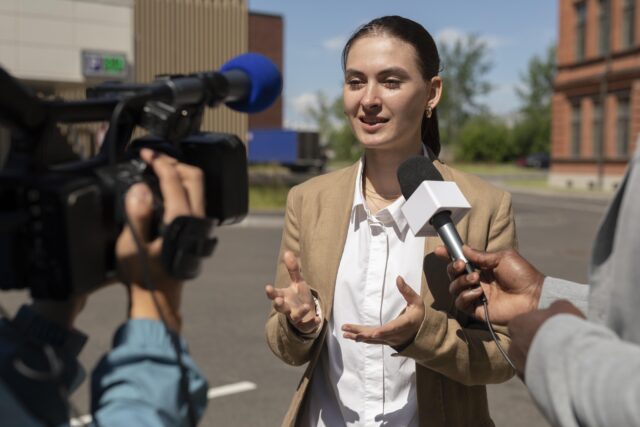In an age where the digital world moves faster than the blink of an eye, artificial intelligence is becoming an indispensable part of modern journalism. From auto-generating news summaries to analyzing massive datasets in seconds, AI is changing the way news is written, shared, and consumed. But while the technology is undoubtedly powerful, one critical question remains: Can machines tell the truth?
This question isn’t just philosophical-it’s deeply practical. Because when AI steps into the newsroom, it brings not only efficiency but also a host of ethical challenges that journalists and tech developers must grapple with. At the heart of this lies the dilemma: Can artificial intelligence be trusted to report the truth, or does it risk distorting it?
The Rise of AI in Newsrooms
AI is no longer a futuristic concept, it’s already writing articles, analysing audience behaviour, and even predicting trending topics. Leading media houses like Reuters, The Washington Post, and Associated Press are using AI-driven tools to automate routine tasks, such as drafting financial reports or sports updates. The appeal is clear: faster news cycles, lower costs, and greater reach.

Natural Language Processing (NLP) and Machine Learning (ML) algorithms allow AI to “learn” from massive amounts of data, picking up on patterns, tone, and even reader preferences. But this automation introduces a new kind of editorial voice—one that isn’t human.
Speed vs. Accuracy: The Risk of Misinformation
One of the biggest challenges in journalism is balancing speed with accuracy. AI excels at the former. It can scan breaking news across multiple sources and summarize it within seconds. But the risk is that in this haste, it may pull in unverified or biased content.
AI systems often rely on data scraped from the internet. If that data includes fake news, propaganda, or biased narratives, the AI model can unintentionally replicate and amplify them. Worse, because it’s a machine, it doesn’t “understand” the truth—it processes what it’s given.
This raises an ethical concern: When AI generates news, who is responsible for ensuring it’s accurate and fair? Is it the developers, the media organization, or the machine itself?
Bias in the Algorithm: A Silent Threat
AI may seem neutral, but the truth is, algorithms are created by humans. And humans carry biases, conscious or not. These biases can slip into AI systems through the training data or even the way the algorithms are designed.
For example, if a news AI is trained on datasets that underrepresent marginalized communities, it may end up delivering content that overlooks or misrepresents those voices. This isn’t just a technical glitch; it’s a fundamental ethical failure.
And unlike a human journalist, who can reflect, revise, and take accountability, AI lacks moral reasoning. It doesn’t understand fairness or harm. It just performs the task it’s programmed for.
Transparency: The Missing Piece
Another major concern with AI in journalism is transparency. When a human reporter writes a story, they can explain their sources, choices, and interpretations. But AI operates in a “black box.” Most readers don’t know when they’re consuming AI-generated content, let alone how it was produced.
To build trust, media organizations must be upfront about AI’s involvement. They should label AI-written pieces clearly and provide insight into how the content was generated. Otherwise, the line between authentic journalism and automated output becomes dangerously blurred.
Can AI Uphold Journalistic Integrity?
Journalism isn’t just about reporting facts – it’s about investigating, questioning, and providing context. These are deeply human activities, requiring judgment, empathy, and critical thinking. While AI can assist in gathering and organizing information, it cannot replicate the human conscience.
That’s why many experts argue that AI should support journalism, not replace journalists. The best outcomes happen when technology and human oversight work hand in hand.
For instance, AI can help identify breaking stories, fact-check data, or transcribe interviews. But the final story, the one that asks tough questions, challenges assumptions, and gives voice to the unheard-should still come from a journalist.
Regulating the Future of AI in Journalism
As AI continues to evolve, the need for ethical frameworks becomes urgent. Media organizations, tech companies, and policymakers must collaborate to establish guidelines around:
- Transparency: Making AI’s role visible to the public.
- Accountability: Defining who is responsible when AI gets it wrong.
- Bias Detection: Actively working to identify and reduce algorithmic bias.
- Human Oversight: Ensuring that journalists remain at the center of the editorial process.
These measures won’t solve every problem, but they’re a start toward building an ethical foundation for AI-powered journalism.
So, can machines tell the truth? The honest answer is, they can help us get there, but only with human guidance. AI in journalism is a powerful tool, but it’s not a replacement for the values that define responsible reporting: integrity, empathy, curiosity, and a commitment to the truth.
As we move deeper into the AI Era, we must ask not just what machines can do, but what they should do. Because the future of journalism doesn’t belong to AI alone, it belongs to a partnership between human insight and technological innovation.


